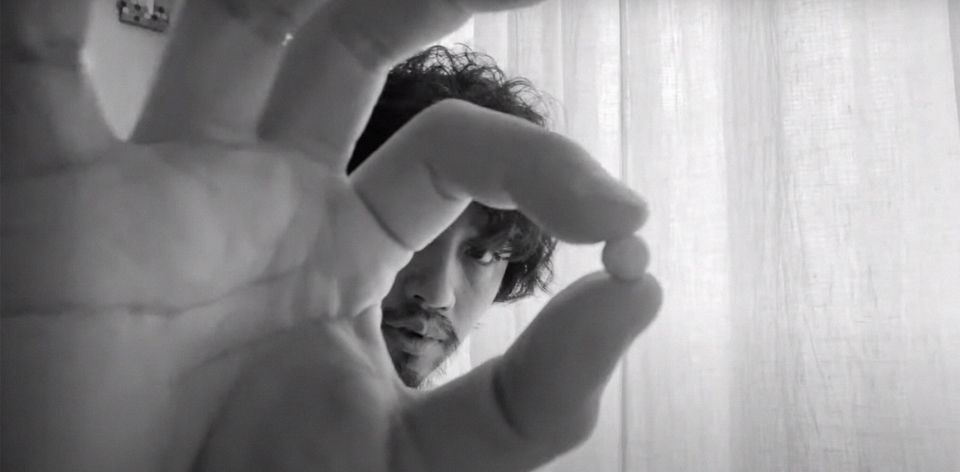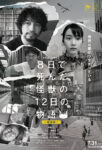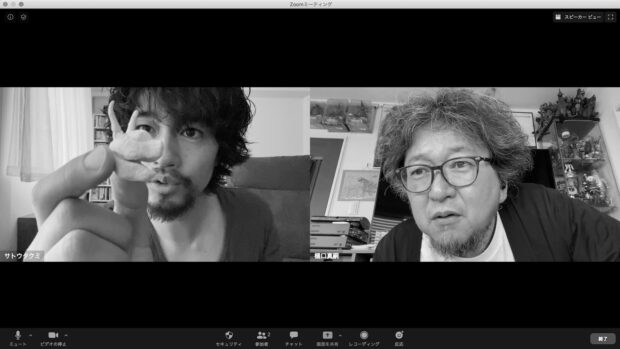One of the lasting cinematic legacies of the Covid Era will be screenlife cinema. While it existed prior to the pandemic, the unique impact on the arts has meant that when we look back on the 2020/2021 calendar years, the history of film may be filtered through a webcam lens.
If ever there was a film that lived up to its title, then it’s this. Expanding on the screenlife antics of Iwai Shunji and Saitō Takumi’s 2020 web series — part of the Kaiju Defeat COVID online challenge started by Higuchi Shinji — it follows model/actor/director Saitō (playing himself) as he passes the time indoors. After buying several capsule kaijū online (and dubbing them Avigan, Remdesivir and Ivermectin), he watches them grow and is convinced they can fight the coronavirus.
In a series of interviews and conversations with ‘experts’ and celebrities alike, Iwai and Saitō construct a little black and white world almost parallel to our own. Coronavirus clearly exists, forcing them all into isolation and lockdown, but people casually speak of the days when “aliens came around every week or so.” It’s a tongue-in-cheek reference to Japan’s monster movie and TV series legacy that still inspires filmmakers to this day. The monsters continue to grow and change, much like the volatility of the COVID outbreak, and Saitō pins his hopes on their ability to fight.
Even with the copious references to Ultraseven (1967-68) and Ultra Q (1966), here is a film that is really about people connecting during a lockdown. The fictional version of Saitō watches a different web series (in one of many metafictional threads) about someone raising their own monsters, while his friend raises an invisible alien. They all mirror our own attempts to keep ourselves occupied during our respective lockdowns. If you recall, there was a time in April 2020 when the whole world seemed united in our private universes.
Ostensibly shot on webcams and phones, the production is a fairly low-key affair. Most scenes play as monologues or two-handers, and it’s primarily shot in black and white with straight to camera talking heads. The need for special effects is eschewed through some clever world-building: aliens are invisible to cameras, and capsule kaijū just happen to look like roughly shaped plasticine.
Iwai’s Fireworks, Should We See It From the Side or the Bottom? (1993) was one of many films in his canon that was about bringing people together during a specific event and finding magic in the everyday. He continues that legacy here, and the ultimate evolution of the tiny monsters makes this one of the most epic PSA films of all time. The film’s form and content may lock this into a specific place and time, but the themes of cooperation and hope remain eternal.
2020 | Japan | DIRECTOR: Iwai Shunji | WRITERS: Iwai Shunji | CAST: Saitō Takumi, Hoshi Moeka, Takei So, Higuchi Shinji, Nōnen Rena | DISTRIBUTOR: Rockwell Eyes, International Film Festival Rotterdam | RUNNING TIME: 88 minutes | RELEASE DATE: 2-6 June 2021 (IFFR)







